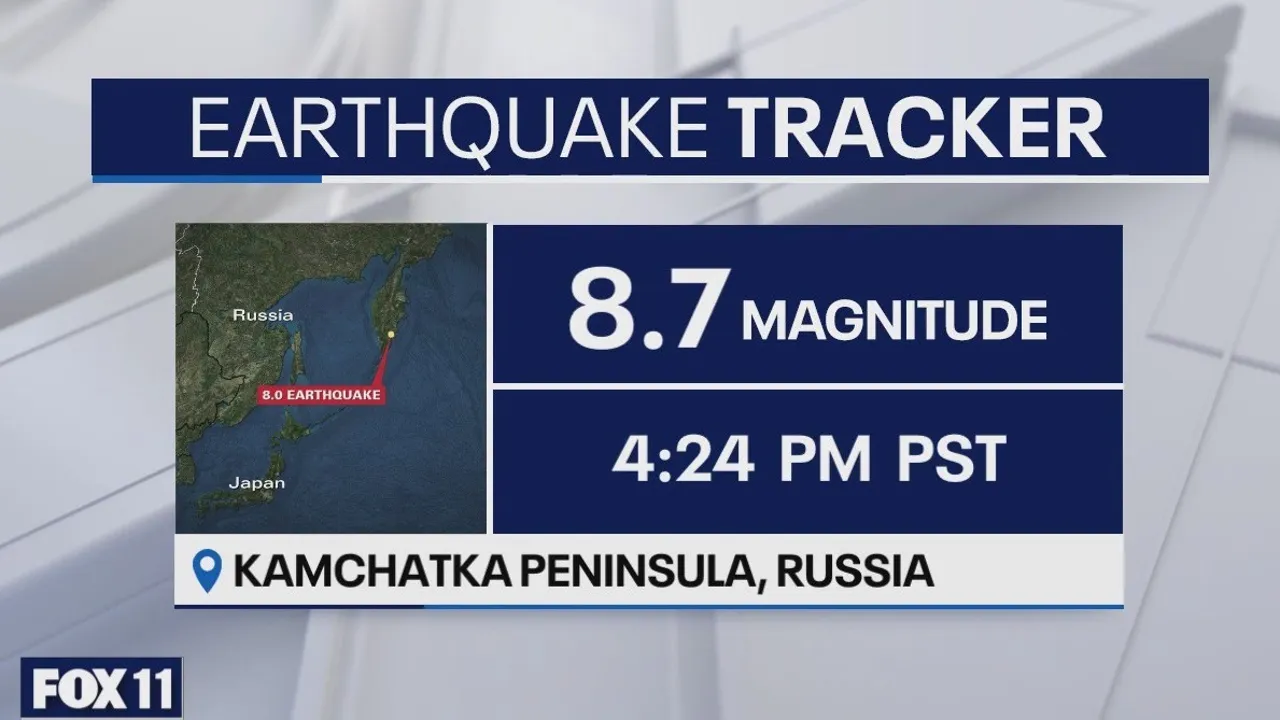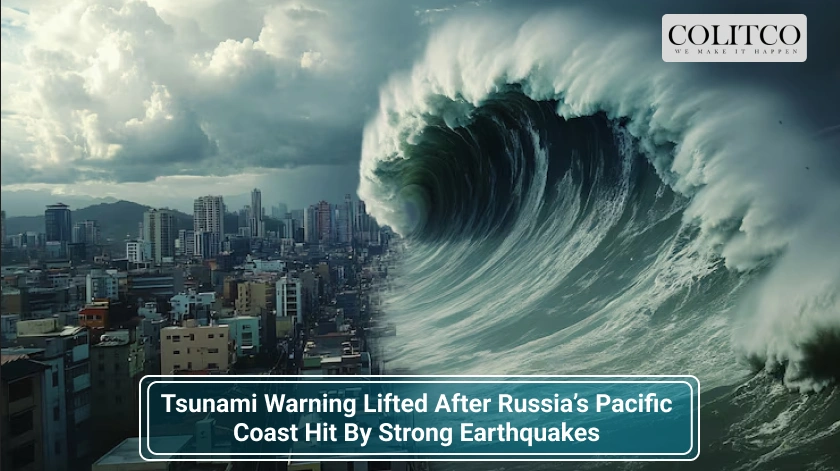Russia earthquake 2025 On July 30, 2025, a massive magnitude 8.7 earthquake struck off the Kamchatka Peninsula in Russia’s Far East, triggering widespread tsunami warnings across the Pacific region. This event, considered the most powerful quake in the region in decades, has left communities on high alert from Russia and Japan to Hawaii and the US West Coast.

Tragic Russian Plane Crash 2025 in Amur Region: 49 Dead, Cause Under Urgent Investigation
Bangladesh Fighter Jet Crash 2025: 27 Dead, 88 Injured in Uttara Tragedy
5 Shocking Facts About the France Riots Over Pension Reforms: Paris and Lyon Burn Over Age 64 Hike
Russia earthquake 2025
Where and How the Earthquake Happened
According to the United States Geological Survey (USGS), the Russia earthquake 2025 struck at a depth of just 19–20 km, making it a shallow event with high tsunami potential. The epicenter was located approximately 130 km east-southeast of Petropavlovsk-Kamchatsky, a major city in Kamchatka, along the Aleutian–Kamchatka subduction zone. This region lies on the Ring of Fire, where the Pacific Plate is forced under the North American and Eurasian Plates, creating frequent and powerful seismic activity.
Seismologists explained that the shallow depth and thrust faulting mechanism are classic indicators of a megathrust earthquake. This is the same type of seismic event that caused the catastrophic 2004 Indian Ocean tsunami.
Tsunami Alerts Issued Across the Pacific
The Russian Emergency Ministry reported waves as high as 4 meters along Kamchatka’s coastline. Evacuations were immediately ordered for coastal towns, including Severo-Kurilsk, as well as smaller fishing villages. Local reports indicated widespread power outages and communications disruptions of the Russia earthquake 2025.
In Japan, the Japan Meteorological Agency (JMA) issued tsunami warnings for Hokkaido and eastern Japan. Residents in low-lying coastal areas were advised to move to higher ground, and trains in northern Japan were temporarily suspended. Early measurements detected waves of up to 0.4 meters, with fears that larger waves—up to 3 meters (10 feet)—could follow.
The Pacific Tsunami Warning Center (PTWC) also issued warnings for Hawaii, while the US West Coast, Alaska, and Canada’s British Columbia were placed under tsunami advisories. Communities in California, Oregon, and Washington began preparations for possible wave surges later in the evening.
Human Impact: Casualties, Injuries, and Missing Persons
As of initial reports, at least 23 people were confirmed dead in Kamchatka due to collapsing structures and drowning incidents in coastal areas. Over 180 people were injured, and dozens remain missing as rescue teams comb through affected villages. Russian authorities have deployed military helicopters and emergency personnel to search for survivors in remote areas.
In Japan, no fatalities have been reported so far, but 12 people sustained minor injuries during hurried evacuations. Hawaii and the US West Coast have not reported injuries yet, as tsunami waves were still expected at the time of writing of the Russia earthquake 2025.
Neighboring Regions Affected
Beyond Russia and Japan, several other Pacific nations issued warnings. The Philippines, Taiwan, Ecuador, Peru, and New Zealand all prepared for possible tsunami impacts. While most are not expected to face major wave heights, precautionary evacuations were undertaken in coastal villages.
The earthquake’s tremors were also felt lightly in Alaska’s Aleutian Islands and parts of northern China, though no major damage was reported outside Russia.
Historical Context
Experts have compared this disaster to the 1952 Severo-Kurilsk earthquake (M9.0), which devastated Kamchatka and killed thousands. Although modern early warning systems have improved preparedness, seismologists warn that the Aleutian–Kamchatka trench is capable of producing even larger Russia earthquake 2025.
Global Response and What’s Next
Emergency aid is already being organized by the Russian government, with support from international agencies. Japan has mobilized search and rescue teams to coastal areas, while Hawaii’s authorities are working to shelter evacuees.
Seismologists warn of the likelihood of strong aftershocks in the coming days, some of which could exceed magnitude 7.0. Coastal communities across the Pacific are urged to remain alert until tsunami warnings are lifted.
Conclusion
The Russia Earthquake 2025 is a stark reminder of the dangers posed by the Ring of Fire and the vulnerability of coastal communities to seismic and tsunami hazards. While early warning systems and quick evacuations have reduced the immediate impact in some regions, the loss of lives and property in Kamchatka highlights the need for continuous preparedness and international cooperation in disaster response. As rescue and relief efforts continue, authorities across the Pacific remain vigilant for aftershocks and additional tsunami threats.
